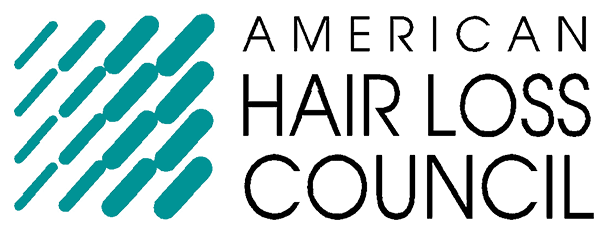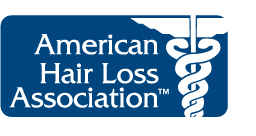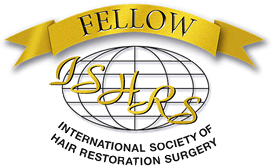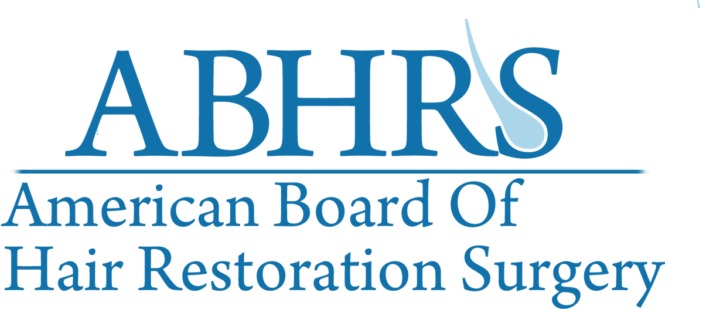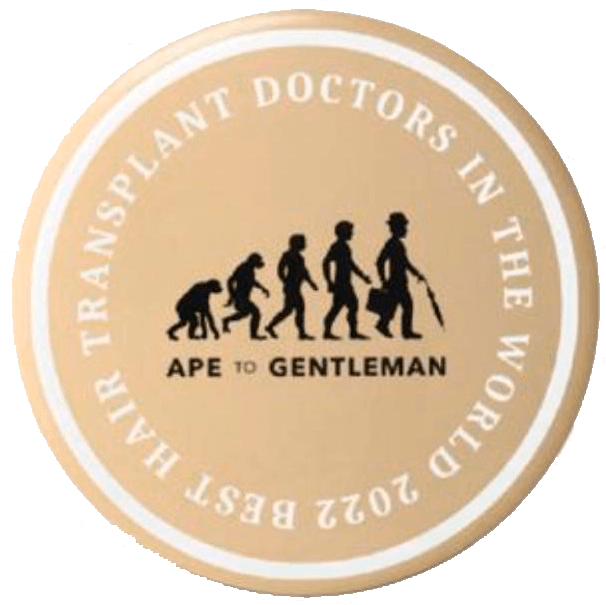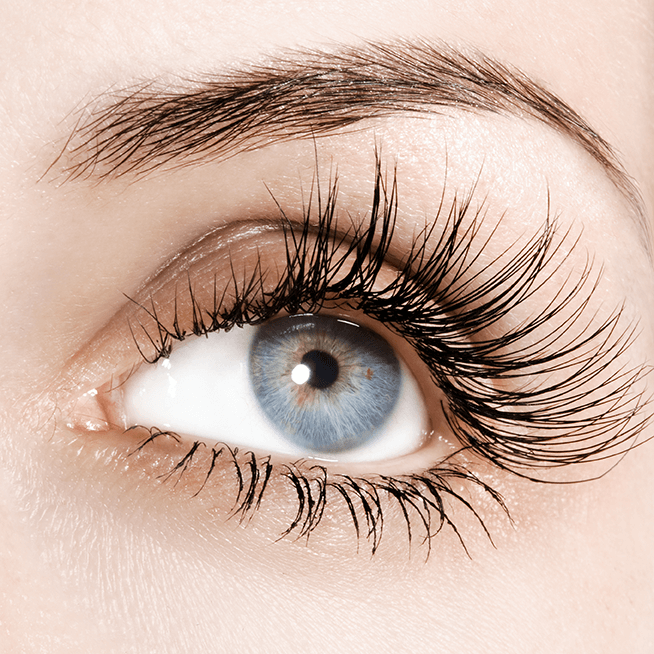Dr. Bauman was recently interviewed by Spotlight magazine, where he not only shared insights into hair loss and the latest treatments that are available today, but also gave us a glimpse into the future of hair restoration treatments, his personal motivations, and some advice for tomorrow’s doctors.
Dr. Bauman Interview- Spotlight Magazine
View the original spotlight here.
Dr. Alan Bauman restores more than your hair at Bauman Medical.
Throughout the country, tens of millions of people are affected by hair loss annually. According to the American Hair Loss Association, about 50 million men in the United States suffer from some type of hair loss while approximately 35 million women are also affected by thinning hair. The worst part is that years ago there were few options and only primitive treatments available to those suffering. Luckily, now with specialists like Dr. Alan J. Bauman leading the medical science behind hair restoration, those dealing with hair loss can breathe a sigh of relief.
After founding his medical practice here in Boca Raton in 1997, Dr. Bauman has been a full-time Hair Restoration Physician for over two decades, has treated over 30,000 patients with some form of hair loss, and performed nearly 10,000 hair transplant surgeries to date. Aside from his many years working to restore hair loss in so many patients, Dr. Bauman is also one of only approximately 200 physicians worldwide to achieve certification from the esteemed American Board of Hair Restoration Surgery, be an accepted member of the International Alliance of Hair Restoration Surgeons, and also to be recommended by the American Hair Loss Association. Nearly 50% of his patients travel from out of town for their evaluations and procedures and his practice has been featured in Forbes, Men’s Health, The New York Times, VOGUE, and more, as well as on literally hundreds of news stories in the media.
The joy I receive from being able to touch patients’ lives – give them back the hair they’ve lost, as well as their confidence, is absolutely incredible.
As to why Dr. Bauman loves doing the work he does, he explains, “The joy I receive from being able to touch patients’ lives – give them back the hair they’ve lost, as well as their confidence, is absolutely incredible.” We recently sat down with Dr. Bauman in his nearly 12,000 sq. ft. facility and talked more about how he got into the medical subspecialty of hair restoration, how his practice in Boca become a worldwide destination-location for hair restoration, and how he changes lives by restoring not just their hair but also his patients’ self-confidence and self-esteem.
Q: What are some of the hair loss and scalp health services offered at your practice?
A: We do everything relating to hair restoration and hair health. With the breadth of services available now we can take care of everything from dull, dry hair to itchy, flaky, oily scalp in our in-house trichology and scalp health programs, to effective at-home and lunchtime medical treatments for thinning hair, all the way up to restoration of complete and total baldness using hair and scalp prosthetics, minimally-invasive hair transplants for not just scalp, but also eyebrows, eyelashes, beards, etc. and everything in between.
Q: How have hair transplants changed in the last few decades?
A: Hair transplantation is a process used to redistribute permanent living and growing hair follicles from the sides and back of the scalp into the thinning or balding area. But when most people think of hair transplants, they think of those awful-looking and painful ‘hair-plugs’ that men used to get in the 70s, or procedures where long scars were left in the back of the head. But, wow, today’s transplants are nothing like that at all. We don’t use scalpels or stitches for harvesting, so you won’t have significant downtime or a linear scar left behind. Instead, using a comfortable process called Follicular Unit Extraction or FUE, we take as little as a single hair follicle at a time and transplant it into its new location without leaving any telltale sign that you’ve had work done. The whole process is a symphony of detail, a combination of microsurgery and artistry that takes some time, with the meticulous design work being the critical step for a 100% natural, undetectable result that lasts a lifetime.
Q: You have a new technology that eliminates the process of shaving a portion of the patients’ head, what is this new process?
A: So, in the past, in order to harvest hair follicles with a minimally invasive FUE approach we would typically have to trim the hair prior to extraction. However, now at my practice we have helped pioneer a brand-new technique called Long-Hair No-Shave VIP|FUE which allows us to relocate the follicles for transplantation without having to shave or trim any of the hair. This is super exciting because it means that you don’t have to change your hairstyle at all for the procedure – perfect if you want to keep your transplant a secret!
Q: Do you see a lot of women experiencing hair loss visiting your office?
A: Yes, absolutely. Women experience hair loss and hair thinning almost as much as men, in fact, 50% of our patients are women. The good news is that most women will not go bald-in-stead, they tend to have a generalized thinning, loss of ponytail volume, or widening part line, etc. For many years before effective hair restoration treatments were available, creative styling and non-surgical hair replacement were the only go-to options-wigs, weaves, and hair extensions. Unfortunately, those things can actually cause damage to the hair by putting excessive tension on the already weak hair follicles under the scalp which make the hair. Now that effective medical treatments are an option, the key is to treat the hair loss as early as possible in order to protect and enhance hair follicle function. We’re also seeing a lot of women who just want to have a better head of living, growing hair, and there are many non-invasive ways to accomplish that, too with regenerative medicine procedures like PRP Platelet Rich Plasma or non-drug treatments like laser therapy.
Q: Depending on your gender, when will you typically start to see hair loss?
A: Hair loss can start in men and women any time after puberty. As for when and how fast it comes on depends on genetics, overall health, medications, and lifestyle factors. Most don’t realize that 20% of men in their twenties can have visible signs of hair loss, and the risk increases about 10% every decade from there. For women, even though hair loss can start around the same time as it does with men, it’s less visible to the naked eye because it’s happening diffusely as opposed to a bald spot in the crown or a receding hairline. Most women notice hair loss around hormonal changes, like the birth of a child, or perimenopause/menopause. By age 50, about half of all women have experienced some thinning hair. Science has shown you can lose about 50% of your hair and it will still look about the same to the naked eye. This means that for men and women, early evaluation and treatment becomes critical. By the time it looks thin, a lot of hair may have been lost.
Q: If you’re worried about hair loss, what are some preventive things you can do?
A: Because hair transplantation is the only way to restore living and growing hair for the long term, early treatment to preserve hair follicle function is always going to be the best treatment. So, something important to look at is your mom and dad’s family history. Do you have family members who have hair loss? Just like if you knew that your grandmother died of a heart attack, you get regular checkups, so if it matters to you, you do the same thing for your hair. We’ll do an early evaluation if you think you’re at risk and then based on what we find we put together a plan starting from the least invasive and non-chemical treatments first like nutrition, FDA-cleared laser therapy devices. We can also add powerful compounded prescription medications, or in-office lunchtime non-surgical treatments like PRP, or other non-invasive ways to get things moving in the right direction. The critical step is measuring early and tracking it over time so you know what’s working.
Q: For someone who is going to be coming in for their first visit, what do the preliminary measurements you do look like?
A: Some of our patients will contact us virtually from a long distance so, of course, we don’t have the ability to do the measurements at that point. Instead, we’ll do a Virtual Consultation which includes a video call and a deep dive into their medical history as well as other factors that may be influencing their hair loss. That usually takes about a half-hour because they’ve submitted info and photos ahead of time. In the office, a typical consultation will take about an hour. We’ll go through all the medical history and perform a physical exam of the scalp to identify the possible causes of hair loss. The evaluation is non-invasive using a scalp microscope and other tools. It involves taking some scientific measurements of hair quality and quantity in different areas, and also the health of your scalp. What we learn from all of those findings will become the basis for a treatment plan and baseline for a revaluation later on as we track your progress. Unfortunately, most dermatologists and even many hair surgeons neglect these important steps to measure your progress over time from medical treatments.
Q: Have you ever had someone come into your office that doesn’t specifically meet the requirements for the services you provide?
A: Of course, not every person that comes in through the door is a good candidate for the treatments and procedures we do. You could be a poor candidate for a hair transplant if you have unrealistic expectations of what the procedure can provide. Maybe you don’t have enough hair available for transplantation? How- ever, since we have so many options now for hair restoration we can help so many more people than we ever could before. From heroic “bare-to- hair” restorations (like my father’s hair transplant!) or just a do-good, feel-great scalp treatment–we have it covered. So, if someone comes in and just wants a little bit better hair quality or to optimize their scalp wellness, for example, we can guide them as to what nutritionals or hair care products they should be working with, how to take better care of their scalp, minimize inflammation or the impact of stress, improve their sleep, or address many of the other things that might be affecting their hair.
Q: Some doctors have a tendency to push certain treatments on their patients, how do you handle what your clients would like to have done?
A: I would never, ever, force a patient to do anything they don’t want or need to do. My patient-centric consultations are designed to ad- dress the patient’s individual goals and outline the options we have available to get them there. Then, they can decide. Patients are truly “the driver of the bus.” You tell me where you want to go and I’ll design a plan to guide you and my team will be with you every step to make it happen. However, let’s also be realistic. If you’re thinking that what you need is just “a vitamin”, when you really need a hair transplant, I’ll be honest and tell you that too. In a patient-centered practice like mine, the thing we’re never going to do is push any treatments or services on you that you don’t want or need.
Q: How have changes in technology impacted your work?
A: Technology actually impacts every area of our work. From connecting via video with people around the world through our virtual consultations to the scientific instruments we use to diagnose and track hair loss, to the variety of mechanical and even artificially intelligent robotic microsurgical hair transplant devices we have on-hand… there’s not a single area of the practice that technology does not touch, actually. I admit, I’m a bit of a technology geek so there’s always something new we’re trying to implement or improve when it comes to technology.
Q: What about your work feeds your spirit?
A: Every day I get to be delighted by patients who are excited about their hair restoration results.
The best payoff that any hair doctor could have is reaping the rewards of their efforts by seeing their patients grow their hair and their confidence. To see patients who come in initially a little hunched over with a baseball hat covering up their hair, to later see them exuding such confidence, shoulders back, and with a beautiful thick head of hair…that’s what makes it all worth it for me – every single day.
Q: What is the most challenging aspect to what you do?
A: I think the most challenging aspect is just finding the time to do everything I want to do related to the practice. Over twenty years ago, I started the business as a solo practitioner and in the very beginning the only other person who worked in my office was Karen, my wife. She handled all the administrative work and I did the consultations and procedures. Today, we employ over 20 full time team members. So, the hardest thing for me over time has been letting go of some of the tasks that I know will be expertly handled by my well-trained staff. It’s a constant battle every day for me to let go of some of those things. But I’m truly thankful that I’m blessed with a talented, motivated team that is always improving their knowledge and skills so we can better help our patients.
Q: Of all of the facets of medicine, why did you choose hair?
A: I would say that hair kind of “chose” me more so than I chose hair. I certainly didn’t think I was going to go to medical school and become a hair transplant surgeon. But I do remember growing up seeing my dad lose his hair, and his dad had been completely bald, and I feared I was next. My first mentor was a plastic surgeon and I remember watching procedures and seeing the satisfaction that he gave his patients cosmetically. I didn’t know exactly where I was heading but I knew I wanted to also do something artistic with surgical skill. So, after I received my MD, I was a surgical intern working towards a career in cosmetic surgery when I learned a little about some innovations in the art and science of hair transplants through a patient I came into contact with. I never would have known that he had had a transplant unless he told me – I was truly amazed! For him, restoring his hair was, as it is for so many people, like a “switch” that turned on, and changed his life for the better. So, that conversation was sort of the spark, if you will, that started me down this exciting and rewarding journey which still continues, almost thirty years later, to this day.
Q: Where do you see your field of medicine in 10 years?
A: Hopefully, by then we’ll have hair cloning! I say that tongue-in-cheek because it was over 20 years ago that they were starting research on hair cloning but scientists just haven’t gotten there yet because it’s just such a complex process. So, that would certainly be interesting… unlimited supply of hair for transplanting! However, even if we just get the same amount of technological acceleration that we’ve already seen, the next ten years will be very, very exciting. For instance, how can we leverage the body’s repair mechanisms to make our hair grow thicker and stronger? How can we discover more risk factors to address to optimize the health of our scalp and our hair? How can we truly “hack” the physiological mechanisms and the internal biological clocks that regulate each and every hair follicle?
Q: Do you do any philanthropic work through your practice?
A: Yes, aside from being active in numerous local charities, we continue to do a lot of pro bono work in the practice, now supported through my non-profit, the Bauman Philanthropic Foundation, where we give back to patients in need. One patient was a young girl who had been in a terrible car accident. She had scarring on her eyebrow and her eyelid and went through multiple procedures to fix the damage and reconstruct her face. However, they could not reconstruct the hair. So, we performed eyebrow and eyelash transplants for her at no charge. That was an exciting and very rewarding procedure to do for her – recreating the symmetry and beauty that had been lost through the injury. She thanked me for that, and also for the lashes which helped keep dust and other debris out of her eye. We’ve also helped patients who have had cancer and lost their hair to chemo, and other patients with scalp trauma, injury, or other conditions that have caused permanent hair loss. A celebrity hairstylist, philanthropist, and friend of mine, Martino Cartier says, “If you don’t know how to give, you don’t know how to live!” and I fully believe that 100%.
Q: Lastly, do you have any advice for medical students considering going into your field?
A: I would say to anyone interested in aesthetic procedures or hair transplants, or even medicine in general, go watch and observe. I did that and it certainly changed my life for the better. Being able to see procedures and patients when I was a teenager and experience it firsthand, that really put me on the right path. Don’t be afraid to reach out to a surgeon or physician and ask to shadow them. At our practice, our door is always open to anyone interested in pursuing a career and helping change lives in the exciting field of hair restoration.
*Each individual’s treatment and / or results may vary.
If you or someone you know has hair loss or eyebrow or eyelash concerns, click to start either a long-distance phone consultation OR an in-person, in-office consultation with Dr. Bauman. You can also Ask Dr. Bauman a Question or simply call Bauman Medical toll-free 844-GET-HAIR or +1-561-394-0024.
Click to donate or learn more about Bauman Philanthropic Foundation. Your generous donation will help change the lives of those in need.



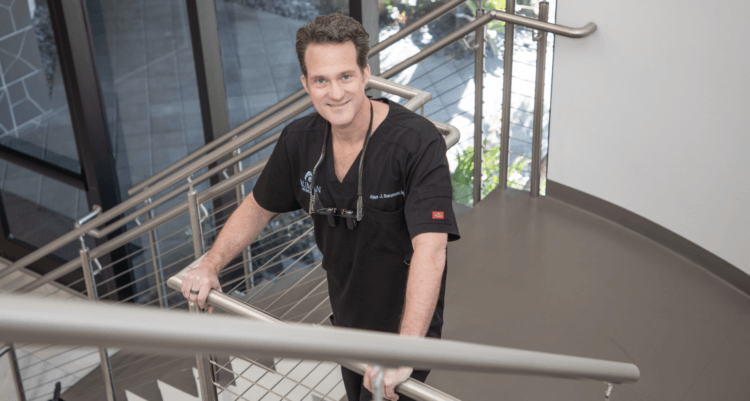
 Destress Your Tresses. Let Bauman Medical’s “Head-Spa” Help You Relax and Grow Hair You’ll be Thankful For
Destress Your Tresses. Let Bauman Medical’s “Head-Spa” Help You Relax and Grow Hair You’ll be Thankful For Does Your Hair Look Affright? Don’t be Scared to do Something about It
Does Your Hair Look Affright? Don’t be Scared to do Something about It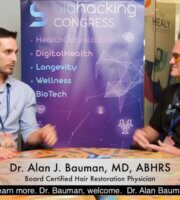 VIDEO: Biohackers Magazine Interview Podcast with Dr Alan Bauman Hair Loss Specialist
VIDEO: Biohackers Magazine Interview Podcast with Dr Alan Bauman Hair Loss Specialist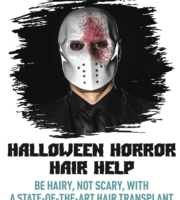 ARTICLE: Halloween Horror Hair Help
ARTICLE: Halloween Horror Hair Help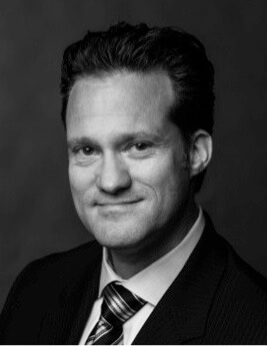 Dr. Alan J. Bauman, M.D.Hair Loss & Hair Transplant ExpertBoca Raton, FL
Dr. Alan J. Bauman, M.D.Hair Loss & Hair Transplant ExpertBoca Raton, FL